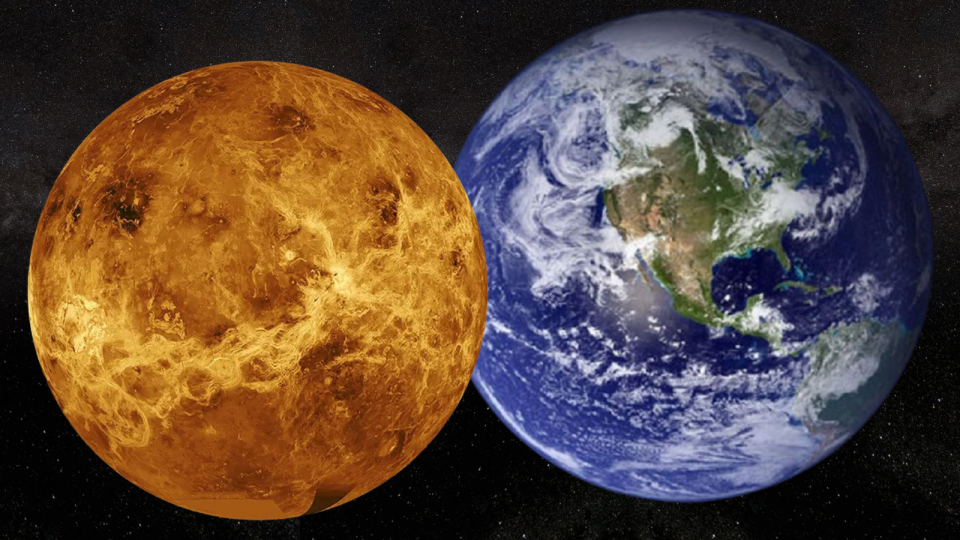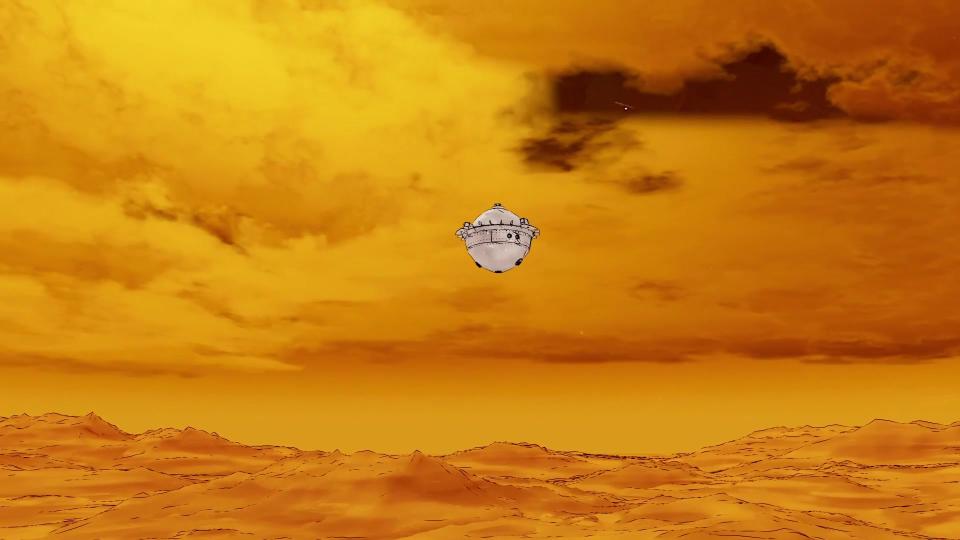Scientists may have identified a molecule that played a key role in dehydrating Venus and transforming that planet into the arid, hellish world we see today.
Venus is often called “Earth’s twin” because both planets are approximately the same size and density; At the same time, both are rocky planets located in the inner region of the solar system. But in many important respects, Venus could not be less like Earth.
While our planet is teeming with life, Venus, the second planet from the Sun, is a hell. It is the hottest planet in the solar system (even hotter than Mercury, which is closest to the sun), with a temperature around 880 degrees Fahrenheit (471 degrees Celsius). This is hot enough to melt lead. Venus also has some pretty scary surface pressures.
More importantly, Venus lacks an essential element for life that is abundant on Earth: water. This is despite the fact that the planet is in the so-called “Goldilocks Zone” of the sun, referring to the region around our star that is neither too hot nor too cold to allow liquid water to exist — and also despite the fact that scientists know Venus likely had water.
Relating to: Zoozve — Strange ‘bear’ coincidentally named after Venus
In fact, billions of years ago Venus is believed to have had as much water as Earth; But at some point in its evolution, clouds of carbon dioxide in the planet’s atmosphere triggered the solar system’s most intense greenhouse effect. This caused temperatures to rise to the point seen today. This caused the water on the planet to evaporate and then disappear into space.
But even accounting for this process, scientists don’t know how Venus became so desert-like or how it lost the little water it still released into space. Now, a team of scientists at the University of Colorado Boulder may have discovered the secrets of this process, telling what they call the “water story on Venus.”
“Water is really important for life,” team leader and scientist Eryn Cangi from the Laboratory for Atmospheric and Space Physics (LASP) said in a statement. “We need to understand the conditions that support liquid water in the universe, and this may have caused Venus’ current dry state.
“We’re trying to understand what little changes are happening on each planet that would lead them to these very different situations.”
Hello neighbour! Could you spare a glass of water?
To put the difference in water content of planetary neighbors Earth and Venus into context, Cangi explained that if all the water on our planet were spread evenly across its surface, it would form a spherical layer almost 2 miles (3.2 kilometers) deep. If we did the same for Venus, stripping the remaining water from the atmosphere would create a spherical layer only 1.2 inches (3 centimeters) deep.
“Venus has 100,000 times less water than Earth, despite being essentially the same size and mass,” team leader and fellow LASP scientist Michael Chaffin said in the statement.
Cangi, Chaffin and their colleagues used computer models of the planet to determine how it reached its current state, treating the planet almost like a giant chemistry laboratory. This allowed them to better study the various reactions occurring in Venus’ rotating atmosphere and identify a suspect for water loss.

What the team discovered was that a molecule called HCO+, made up of a hydrogen atom, a carbon atom, and an oxygen atom, high in Venus’ atmosphere, may have been responsible for transporting the last of the planet’s water into space.
“As an analogy, let’s say I empty the water from my water bottle,” Cangi said. “There would still be a few droplets left.”
HCO+ may actually be removing these droplets from Venus’ atmosphere. In fact, the same team had previously suggested that HCO+ was the culprit causing Earth’s other neighbor, Mars, to lose water.
Researchers say that HCO+ is constantly produced in the atmosphere of Venus, but these ions do not survive for long. An ion is a positively or negatively charged molecule that has gained its charge due to the absence of some necessary electrons to balance the positive charge of its protons or the presence of extra electrons to create a net negative charge in the molecule.
HCO+ lacks the electrons needed to balance the positive charge of the molecule’s protons and is therefore positively charged (hence the + symbol).
Electrons in Venus’ atmosphere rapidly combine with HCO+, causing the molecule to split in two. The team argues that from there the hydrogen atoms are rapidly moving away and possibly even escaping into space. Hydrogen atoms form the two components of the water molecule (H2O), which consists of two hydrogen atoms and one oxygen atom, thus causing Venus to be deprived of the main components of water.
The team thinks that for Venus to reach an extremely dry state, there would have to be an excessive amount of HCO+ molecules in the planet’s atmosphere.
“One of the surprising results of this work is that HCO+ should actually be among the most abundant ions in the Venusian atmosphere,” Chaffin said.


However, there is a major obstacle to reaching this conclusion. So far, we have never seen HCO+ in the atmosphere of Venus.
But Chaffin and Cangi think this is not because the molecule isn’t there, but because humanity lacks the tools to see it. Although Earth’s neighbor Mars has been visited by numerous spacecraft from Earth, very few missions have been sent to our other neighbor Venus, and none of them had the right equipment to see HCO+.
Related Stories:
— Life on Venus? Interesting molecule phosphine was again seen in the planet’s clouds
— If Venus had plate tectonics similar to Earth in its distant past, was there life on it too?
— Magellanic Clouds should be renamed, astronomers say
But a number of future space missions are setting their sights on Venus. NASA’s Deep Atmosphere Venus Probe (DAVINCI) mission for Noble Gases, Chemistry, and Imaging is a particularly important mission. DAVINCI, scheduled for launch in 2029, will drop a probe into the scorching hot atmosphere of Venus to determine the chemical composition of the earth.
But even DAVINCI won’t have the right equipment to detect HCO+.
Still, the team hopes that a general interest in Venus will emerge thanks to DAVINCI (and the European Space Agency’s upcoming EnVision mission), eventually leading to a space mission capable of detecting HCO+, thereby adding credibility to the team’s dehydration story . .
“Not many missions have been made to Venus,” Cangi concluded. “But newly planned missions will draw on decades of collective experience and growing interest in Venus to explore the extremes of planetary atmospheres, evolution, and habitability.”
The team’s research was published Monday (May 6) in the journal Nature.